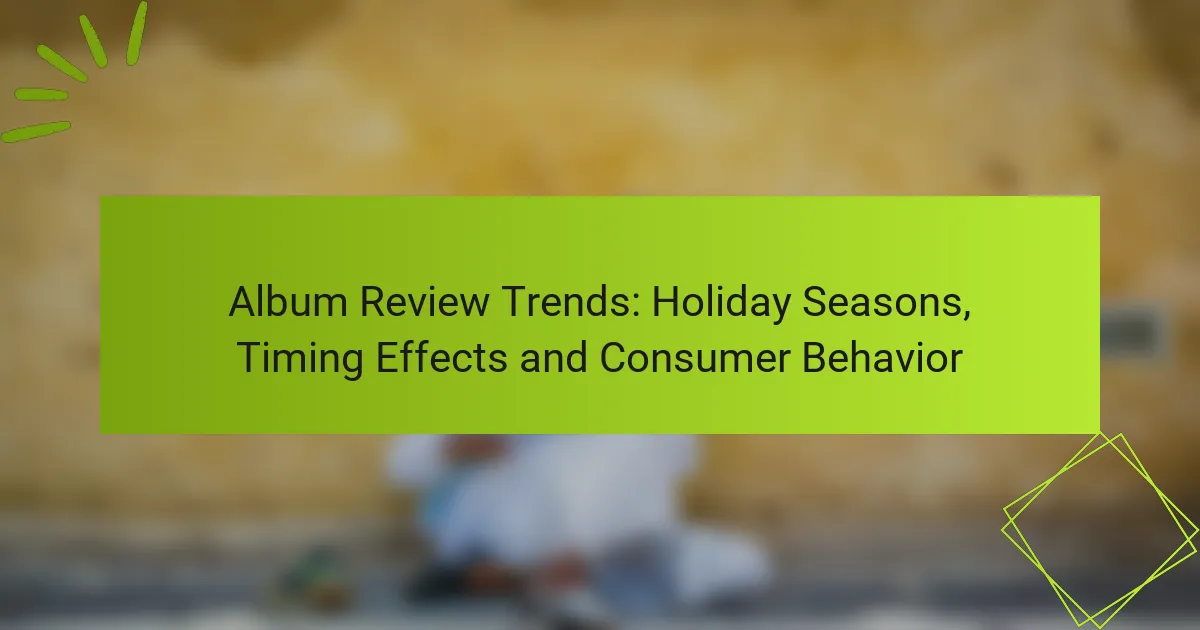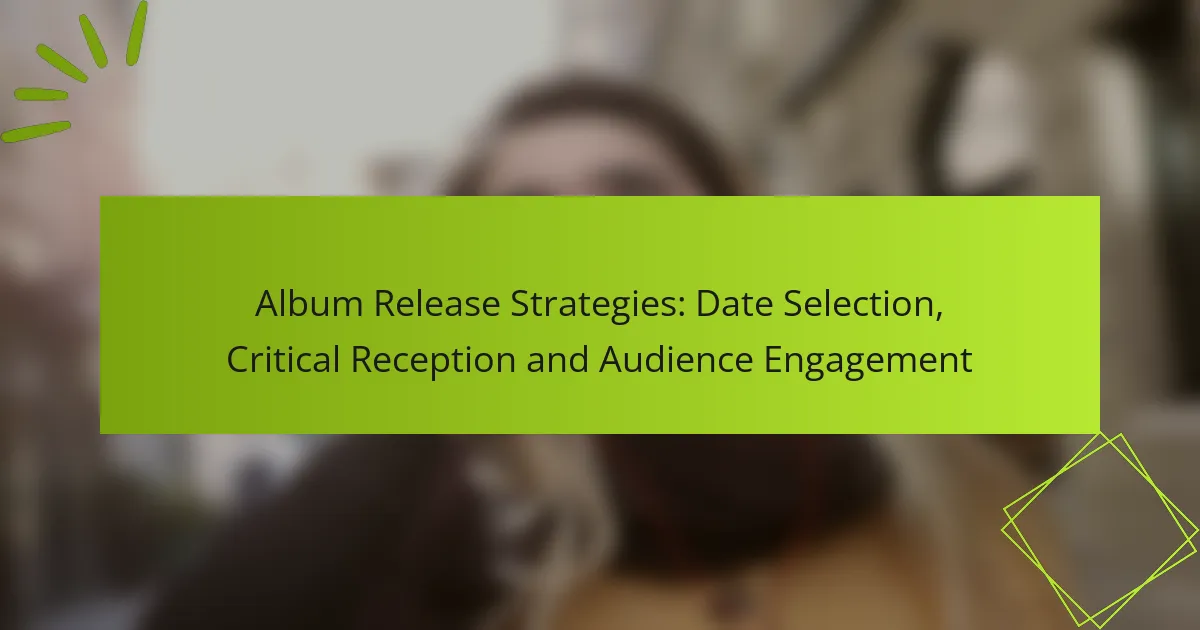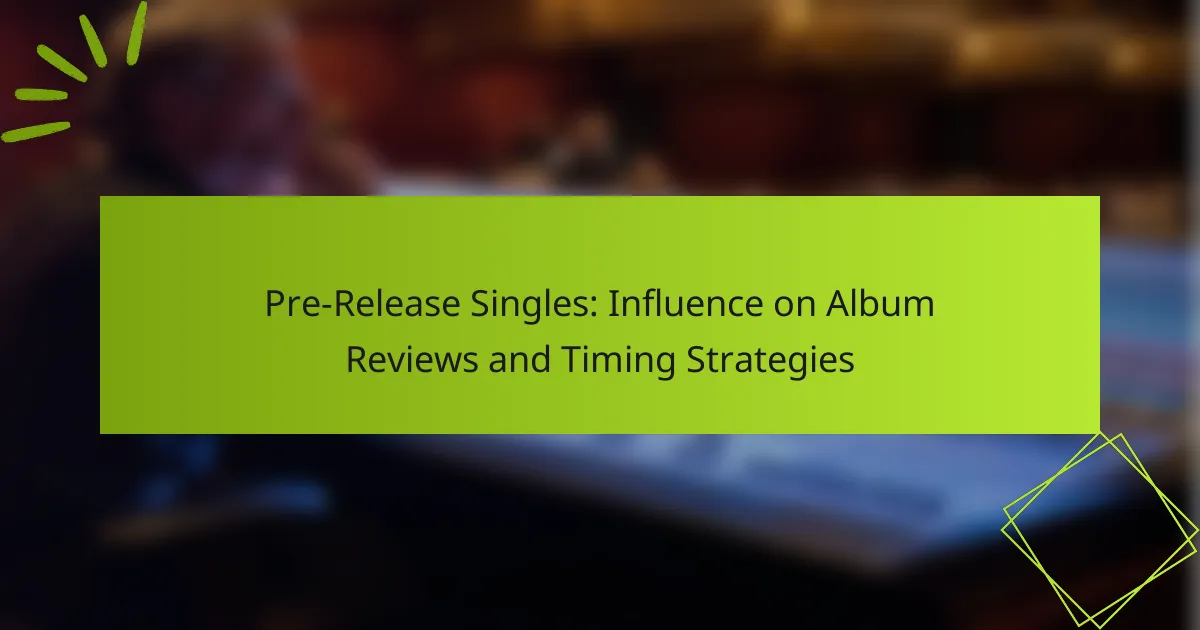In today’s digital landscape, social media plays a crucial role in the timing and perception of album reviews, enabling instant feedback and shaping critics’ evaluations. This immediate interaction not only accelerates the review process but also influences how audiences perceive an album’s value, often swaying its market success based on prevailing public sentiment. Artists can leverage these platforms to enhance their promotional strategies, engaging fans and building anticipation for their releases.
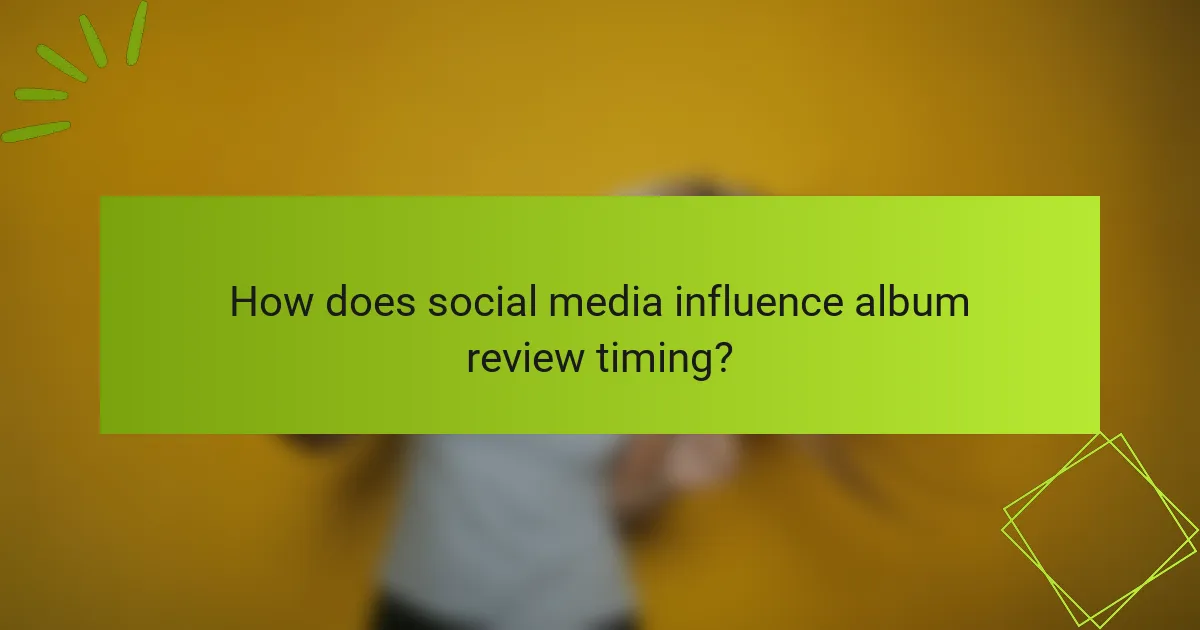
How does social media influence album review timing?
Social media significantly impacts the timing of album reviews by creating immediate channels for audience feedback and shaping critics’ responses. This rapid exchange of opinions can accelerate the review process and alter the perceived value of an album based on real-time reactions.
Immediate feedback loops
Social media platforms enable fans to share their thoughts on new albums almost instantly. This immediate feedback loop allows artists and labels to gauge public sentiment and adjust marketing strategies accordingly. For example, if a single from an album receives a strong positive response, the release of the full album may be prioritized to capitalize on that momentum.
Critics often monitor these platforms to understand audience reactions, which can influence their own reviews. A trending hashtag or viral post can shift a critic’s focus or urgency in publishing their thoughts, creating a dynamic interplay between audience and reviewer.
Influence on release strategies
Record labels increasingly consider social media buzz when planning album releases. A well-timed social media campaign can create anticipation, leading to strategic release dates that align with peak online activity. For instance, releasing an album on a Friday, when many users are active, can maximize initial engagement and reviews.
Moreover, artists may choose to drop surprise albums following a viral moment, leveraging the existing buzz to enhance visibility. This tactic can lead to a spike in reviews shortly after release, as critics rush to provide their insights while the album is trending.
Impact on critic timelines
The influence of social media extends to the timelines critics follow for album reviews. With the pressure to publish quickly, many reviewers now aim to release their critiques within days of an album’s launch, sometimes even within hours. This urgency can lead to more spontaneous, less polished reviews, which may not fully capture the album’s depth.
Critics also face the challenge of balancing thorough analysis with the need for timely publication. As social media continues to shape audience expectations, reviewers must adapt their processes to remain relevant, often prioritizing speed over comprehensive evaluation.
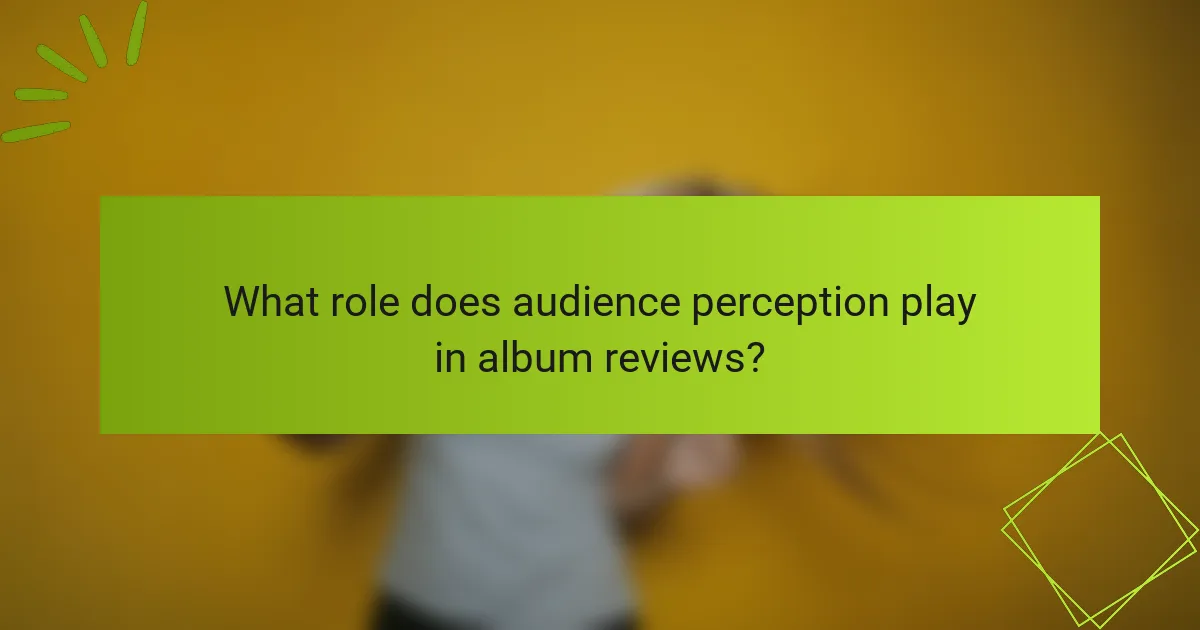
What role does audience perception play in album reviews?
Audience perception significantly influences album reviews by shaping how critics and listeners interpret music. Positive or negative public sentiment can enhance or diminish an album’s reception, affecting its success in the market.
Shaping public opinion
Public opinion is often formed through social media buzz, which can create a narrative around an album before its release. When fans express excitement or disappointment, it can lead to a collective perception that impacts critical reviews. For instance, if a single from an album goes viral, it may elevate the overall anticipation and perceived quality of the album itself.
Critics often consider audience sentiment when writing reviews, as they aim to align with or challenge prevailing opinions. This interplay can lead to a feedback loop where reviews reinforce audience perceptions, further shaping public opinion.
Engagement metrics
Engagement metrics, such as likes, shares, and comments on social media, provide tangible indicators of audience perception. High engagement levels often correlate with positive reception, prompting critics to take notice. For example, an album that garners significant online discussion may receive more favorable reviews due to its perceived popularity.
However, it is essential to differentiate between genuine engagement and fleeting trends. Critics should be cautious of basing reviews solely on short-term metrics, as they may not reflect the album’s lasting impact. A balanced approach considers both immediate audience reactions and deeper, more sustained evaluations of the music.
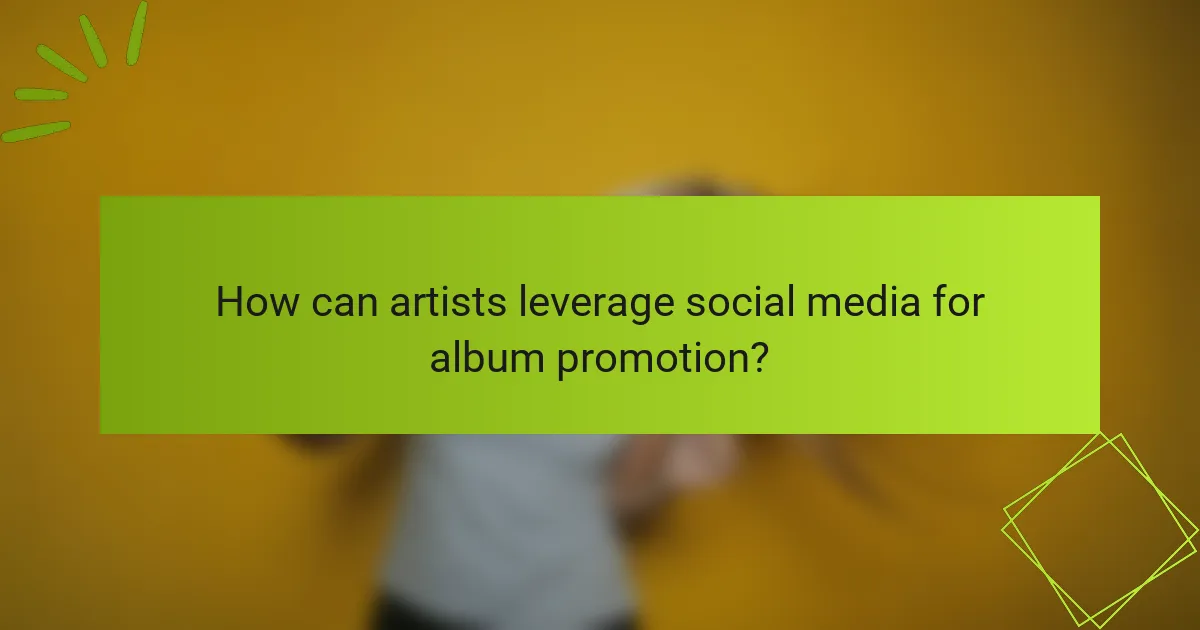
How can artists leverage social media for album promotion?
Artists can effectively use social media to promote their albums by creating targeted campaigns that engage their audience and build anticipation. By utilizing various strategies, they can maximize their reach and influence audience perception around their music releases.
Targeted advertising
Targeted advertising allows artists to reach specific demographics that are most likely to resonate with their music. Platforms like Facebook and Instagram offer tools to define audiences based on interests, age, and location, which can lead to higher engagement rates.
For example, an artist can create ads that showcase snippets of their new album, targeting fans of similar genres. Setting a budget and testing different ad formats can help identify what resonates best with potential listeners.
Influencer partnerships
Collaborating with influencers can amplify an artist’s reach and credibility. Influencers who align with the artist’s brand can introduce their music to new audiences, making it a powerful promotional strategy.
When selecting influencers, consider their follower demographics and engagement rates. A partnership could involve influencers sharing exclusive content, hosting listening parties, or creating challenges that encourage fan participation.
Fan engagement strategies
Engaging directly with fans can foster a loyal community around an artist’s music. Strategies such as live Q&A sessions, behind-the-scenes content, and interactive polls can keep fans invested and excited about upcoming releases.
Artists should prioritize responding to comments and messages to build a personal connection. Creating exclusive content for fans, such as early access to singles or special merchandise, can also enhance engagement and encourage sharing among followers.

What are the best practices for timing album reviews?
Timing album reviews effectively can significantly influence audience engagement and perception. Key practices include aligning reviews with social media buzz and monitoring audience sentiment to ensure relevance and resonance.
Aligning with social media trends
To maximize impact, album reviews should be timed to coincide with social media trends. This means releasing reviews shortly after an album launch or during peak discussion periods on platforms like Twitter, Instagram, or TikTok. Engaging with trending hashtags or challenges can enhance visibility.
For example, if an artist is trending due to a viral video or a live performance, publishing a review at that moment can attract more readers. Consider using tools like Google Trends or social media analytics to identify these peak times.
Monitoring audience sentiment
Understanding audience sentiment is crucial for timing album reviews. By analyzing comments, likes, and shares on social media, reviewers can gauge public interest and emotional reactions to an album. This insight helps in deciding when to publish a review for maximum engagement.
Utilize sentiment analysis tools to track how audiences are responding to an album. If sentiment is overwhelmingly positive, releasing a review soon after the album’s debut can capitalize on that enthusiasm. Conversely, if reactions are mixed, it may be wise to wait and provide a more nuanced perspective later on.
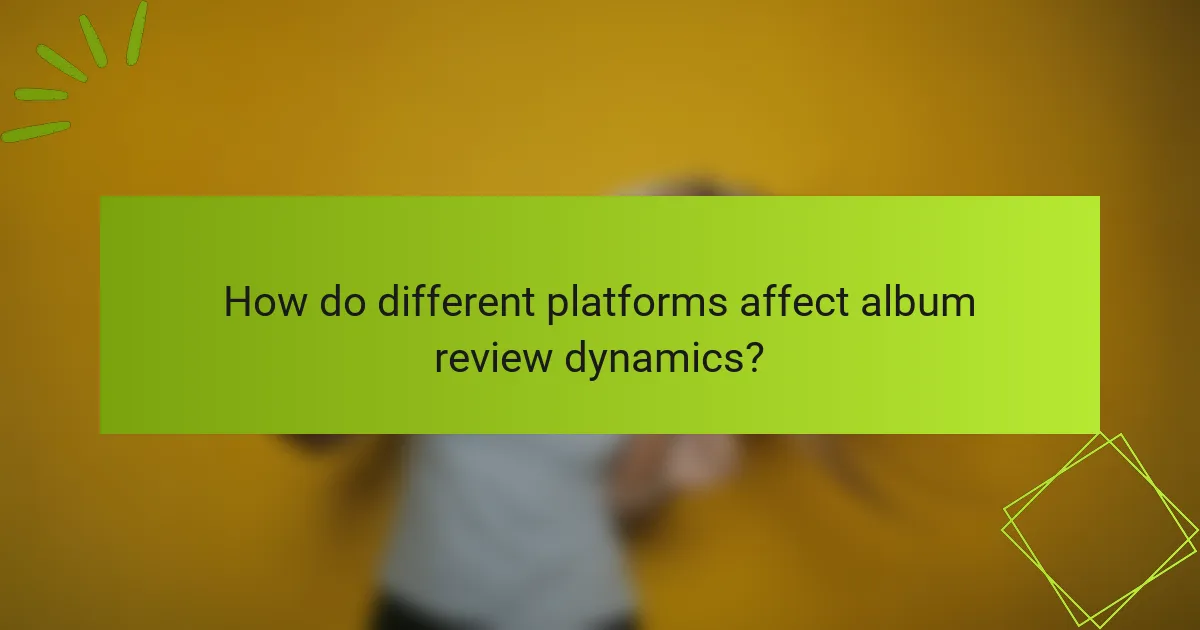
How do different platforms affect album review dynamics?
Different social media platforms significantly influence how album reviews are perceived and shared. Each platform offers unique features that cater to various audience preferences, shaping the timing and nature of the reviews.
Twitter for real-time reactions
Twitter is ideal for capturing immediate reactions to album releases. Users often share their thoughts within minutes, creating a fast-paced dialogue that can influence public perception.
With character limits, tweets are concise, making them perfect for quick opinions or standout moments from an album. Hashtags related to the album can help aggregate these reactions, allowing fans to follow the conversation easily.
Instagram for visual storytelling
Instagram leverages visuals to enhance album reviews, allowing artists and fans to share artwork, behind-the-scenes content, and personal interpretations of the music. This platform is particularly effective for creating a narrative around an album’s themes through images and videos.
Engagement on Instagram often comes from aesthetically pleasing posts, which can include album covers, concert footage, or fan art. The use of stories and reels can also provide a dynamic way to share snippets of songs, further enriching the review experience.
Facebook for community engagement
Facebook fosters deeper community engagement around album reviews, allowing for longer discussions and interactions among fans. Groups and pages dedicated to specific artists or genres create spaces for fans to share their insights and experiences.
With features like event creation, polls, and live discussions, Facebook can facilitate organized listening parties or Q&A sessions with artists, enhancing the overall album review experience. This platform is particularly useful for building a sense of community and loyalty among fans.

What metrics should be considered for audience perception analysis?
Audience perception analysis should focus on metrics that provide insights into how listeners feel about an album and how they interact with related content. Key metrics include sentiment analysis, engagement rates, and the shareability of content, each offering unique perspectives on audience reactions.
Sentiment analysis tools
Sentiment analysis tools evaluate audience emotions expressed in social media posts, comments, and reviews. These tools use natural language processing to categorize sentiments as positive, negative, or neutral, helping to gauge overall audience feelings about an album. Popular tools include Brandwatch, Hootsuite Insights, and Google Cloud Natural Language.
When using sentiment analysis, consider the context of comments. A negative comment may stem from a specific aspect of the album rather than the overall experience. Aim for a sentiment score that reflects a balanced view, ideally focusing on trends over time rather than isolated incidents.
Engagement rates
Engagement rates measure how actively audiences interact with album-related content on social media. This includes likes, shares, comments, and overall reach. A high engagement rate, often above 2-3%, indicates strong audience interest and can signal positive reception.
To improve engagement, create content that encourages interaction, such as polls or questions about favorite tracks. Monitor engagement trends closely, as spikes or drops can provide immediate feedback on how new releases are being received.
Shareability of content
Shareability refers to how likely audiences are to share album-related content with their networks. High shareability often correlates with strong audience interest and can amplify reach significantly. Content that resonates emotionally or provides valuable insights tends to be shared more frequently.
To enhance shareability, focus on creating visually appealing graphics, compelling videos, or insightful articles. Track shares across platforms to identify which types of content resonate best, and adjust your strategy accordingly to maximize audience reach and impact.

